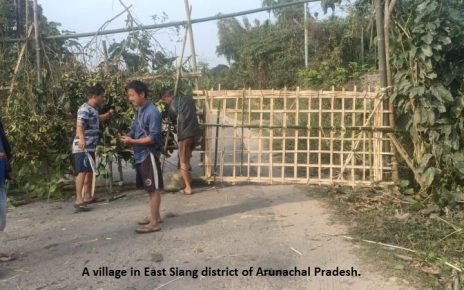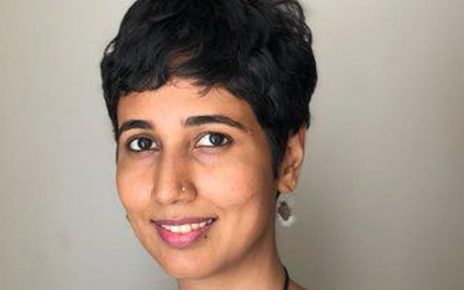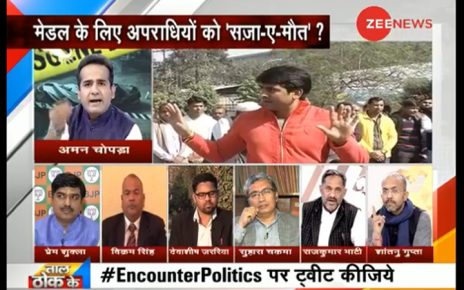The Kashmir Monitor
17 September 2020
By Ajaz Ashraf
The Muslim community has been infantilised by the Delhi Police in the controversial chargesheet that it recently filed in the February riot cases. The charge sheet will make a reader believe that Muslims live in a cocoon, completely disconnected from debates raging in the country. Their poor educational attainment deprives them of the intelligence to analyse issues pertaining to even them—and they, therefore, lack agency to initiate a movement to secure their rights.
The supplementary charge sheet suggests that Muslims are the people who can only be led, not lead. The Delhi Police, therefore, makes out that Communist Party of India (Marxist) leader Sitaram Yechury and a band of intellectuals were the pipers whom the Muslims followed; they were the puppeteers who willed the Muslims to take to the streets against the new citizenship policy. The charge sheet will have the reader ask: are the relatively uneducated incapable of recognising whether a piece of legislation undermines their interests?
The charge sheet, at the outset, says the three accused—Devangana Kalita, Natasha Narwal and Gulfisha Fatima, all members of the Pinjra Tod group—established “groups of Muslim ladies” in Muslim residential localities, fruit markets and around dhabas. To these groups of ladies, the three misinterpreted the provisions of the CAA and the National Register of Citizens (NRC) exercise to claim that these were designed to expel Muslims from India.
The narrative, thereafter, turns to unravelling the conspiracy behind the riots. Gulfisha, for instance, is presented as a mindless, impressionable person, whom Devangana and Natasha recruited to organise protests against the CAA in northeast Delhi. Devangana and Natasha, in turn, acted at the behest of intellectuals—economist Jayati Ghosh, Delhi University professor Apoorvanand, film-maker Rahul Roy, etc—who told them in December, at the time the sit-in at Shaheen Bagh was grabbing headlines worldwide, that they should go to “any length” to organise protests against the CAA-NRC. The two Pinjra Tod leaders also received tips from youth leader Umar Khalid, who helped identify Gulfisha as the person best suited to rock the streets of northeast Delhi with protests.
According to Devangana and Natasha’s disclosure statements, which they refused to sign, they told Gulfisha that the anti-CAA protests will enable them to “malign the image of the government” and portray it as opposed to the Muslim community. They also confessed to have used their “educational qualification [of PhD] to misguide the common Muslim people” about the CAA-NRC. Thus were the Muslims enticed into protesting against the government.
The depiction of protests as a conspiracy of the educated to mislead the “less-educated” is repeated in the disclosure of Gulfisha. She is said to have told the Delhi Police that leaders such as Yechury, Yogendra Yadav, Chandra Shekhar Ravan, Umar Khalid and lawyer Mahmood Pracha would, in their speeches in northeast Delhi, define protest as a democratic right.
This fanned the discontent of Muslims, to whom Devangana and Natasha were deliberately presented as JNU scholars. Their academic qualification enabled them to successfully misconstrue the CAA-NRC to the “less-educated.” The charge sheet claims Gulfisha, an MBA, was extremely impressed by Devangana and Natasha, and adds, “She [Gulfisha] became an icon of Seelampur and Jaffarabad.” A gullible Gulfisha became the Pinjra Tod’s paw in northeast Delhi.
Devangana comes across as the most villainous of Pinjra Tod activists, largely because her Assamese identity imparted credibility to her description of the NRC exercise in Assam. It is claimed she would tell people that Muslims in Assam were kept in detention centres and forcibly deported to Bangladesh. This scared the Muslims into protesting against the CAA-NRC, the charge sheet suggests.
There cannot be a more ridiculous proposition than to claim that Delhi’s Muslims were ignorant of the implications of the CAA-NRC exercise until the intellectuals and PhD scholars from Jawaharlal Nehru began to speak about it.
No less than Home Minister Amit Shah had been waving the CAA-NRC as a weapon to expel “infiltrators”, a term used by the Bharatiya Janata Party for the Muslims from Bangladesh. In October 2019, at a conference in Kolkata, Shah said, “I want to tell you today that before conducting the NRC the BJP will bring the Citizenship Amendment Bill or CAB [subsequently enacted in December as the CAA]. CAB means that all who are Hindu, Sikh, Buddhist, Christian, [and] Jain who have come to this country will get the Indian citizenship permanently.” He said no country could progress bearing the huge burden of infiltrators, who, therefore, needed to be thrown out.
A few weeks earlier, BJP general secretary Kailash Vijayvargiya had assured the people of Kolkata: “I want to assure all of you that NRC will be implemented but not a single Hindu will have to leave the country. Each and every Hindu will be given citizenship.” What about the Muslims? Vijayvargiya said, “India is not a charity house that those who are the majority community in Bangladesh, Afghanistan and Pakistan [Muslims] can infiltrate, spread terror and take away the livelihood of our citizens…”
On 30 July 2019, when the final National Register of Citizens for Assam was made public, around 19 lakh applicants did not find their names in it. In an interview to India Today’s Rajdeep Sardesai, Assam’s powerful Cabinet Minister Himanta Biswa Sarma said that out of the 19 lakh people excluded from the NRC, 5.4 lakh were Hindus. They would be protected from deportation, he promised. As for Muslims, Sarma said, “The ones who entered the country to enjoy economic benefits…must be identified and they must be not eligible to vote.”
All these remarks made TV headlines and, often, were front-paged in newspapers. These clearly outlined to the public that the CAA would be followed by the NRC, and the former had been enacted to protect the undocumented Hindu migrants from deportation. Muslims may be educationally backward (or “less-educated”, to use the term the supplementary chargesheet invokes), but they do watch TV and a substantial percentage of them read newspapers.
It was only natural for Muslims to dread the future, after the enactment of the CAA. They had lived through five years of constant demonisation by the BJP, and seen the Modi government annul the special status of Jammu and Kashmir, the only Muslim majority state in India, on 5 August 2019. They had heard and read of how the NRC had traumatised the Assamese people.
“Since the NRC exercise began in 2013, around 104 people committed suicide or died prematurely because they could not cope up with the fear of exclusion,” said Zamser Ali, the state advisor of the Centre for Justice and Peace.
The poor were indebted or squandered their meagre savings to procure documents to establish their citizenship or to travel to NRC Kendras when summoned. Suhas Chakma, director of the Rights and Risks Analysis Group, a Delhi-based think tank, has calculated that the 41.10 lakh people who were excluded from the draft NRC, made public on 30 July 2018, spent Rs 7,836 crore until the final NRC was released in July 2019.
For a party enjoying a brute majority in the Lok Sabha and believing it had browbeaten the minorities into submission, its leaders were stunned to see Muslims pour out on the streets, organise passive resistance and read the Preamble to the Constitution, braving the winter chill and minatory tactics of the Hindutva brigade. Perhaps the most spectacular aspect was of women taking the lead in the protests. How could hijab-wearing women, who, according to the BJP, are oppressed, provide the lead?
There had to be a conspiracy, the regime thought.
Yet the same BJP serenaded the Muslim women who had fought for the abolition of triple talaq, even supported its criminalisation. No less than Prime Minister Narendra Modi, in his Independence Day speech of 2017, said, “I pay my respect to those women had to lead miserable lives due to triple talaq and then started a movement which created an environment in the whole nation against the practice.”
Modi assured these battling women that they would succeed as the whole country’s support was for “them in this significant step towards women’s empowerment.” It is altogether another matter that those who constituted the vanguard in the fight against triple talaq are silent on the incarceration of young men and women for demanding equal citizenship.
It is, obviously, too much to expect Modi and his bhakts to cheer Muslim women who organised sit-ins. But they should, at least, realise that the “less-educated” do have a keen sense of their rights—and their violations. And tell the Delhi Police that Muslims are not so dumb as to be misled by a few intellectuals.
(The author is an independent journalist and a frequent contributor. The views are personal. This article was published in: www.newsclick.in)



